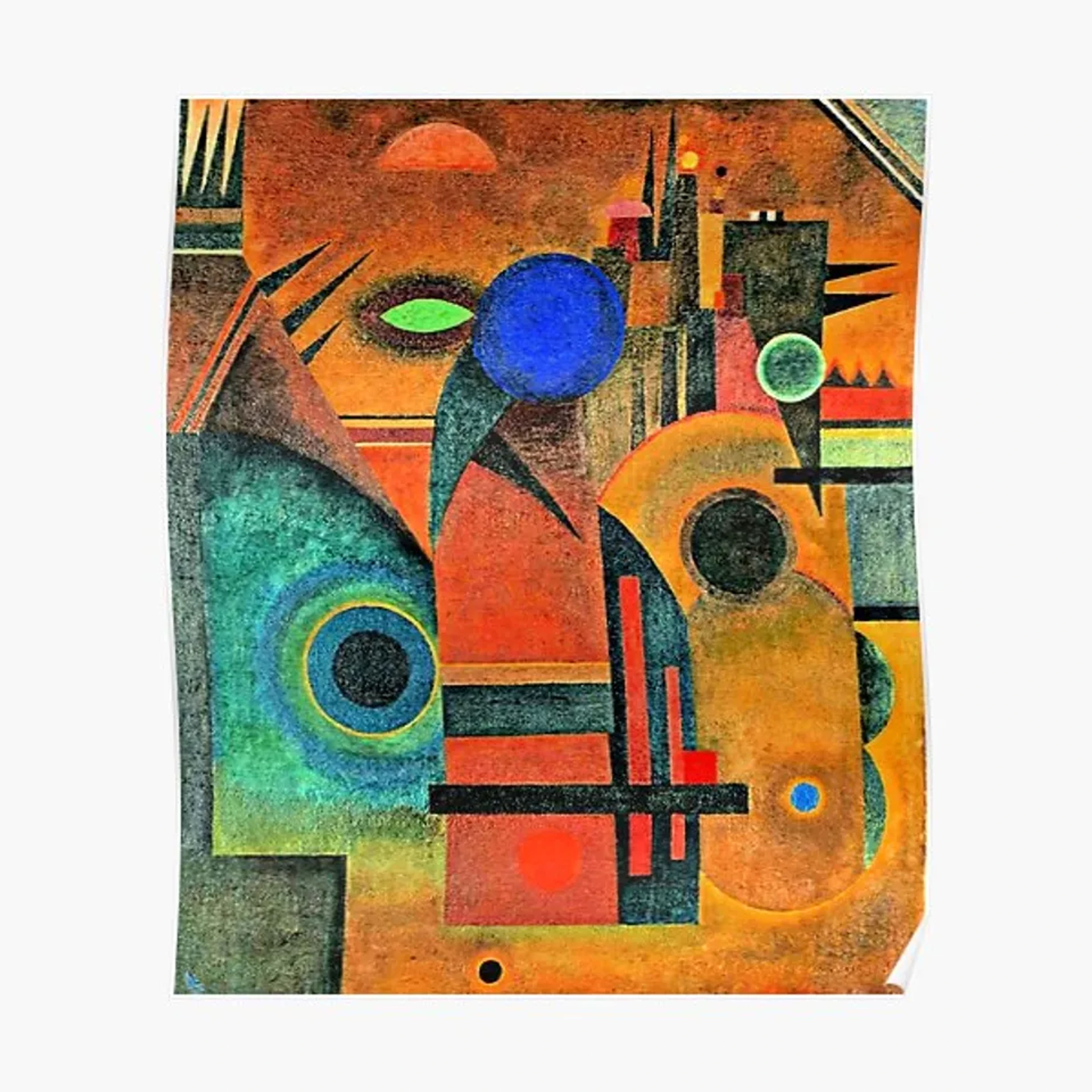
Rijksmuseum Amsterdam: An Artist's Guide to Dutch Golden Age Treasures
Unlock Amsterdam's Rijksmuseum like an insider. This artist's guide offers practical tips for first-timers, a deep dive into the Dutch Golden Age, and unique insights into how these masterpieces spark contemporary creative journeys. Plan your inspiring visit!
Stepping into Amsterdam's Rijksmuseum for the very first time, I remember a potent mix of excitement and a rising tide of 'Where on earth do I even start with all this history and beauty?!' It's an exquisite, overwhelming buffet, and honestly, I was a bit terrified I'd get artistic indigestion if I tried to sample absolutely everything. As an artist myself, I often find myself looking at these grand works through a creator's lens. I'm not just appreciating them; I'm actively deciphering the choices made by the masters. It’s a process that profoundly informs my own creative journey, a journey I share in my artist timeline, mirroring how these masters charted theirs, offering a glimpse into my own artistic path. I might look at how Rembrandt uses impasto to give a figure a tangible presence, or how Vermeer’s subtle color shifts create that almost luminous quality, and then consider how I can apply that understanding of texture or light in my own abstract compositions. In fact, a particular heavy application of paint in 'The Night Watch' once sparked an entire series of my abstract pieces, where I explored building up monumental, tactile forms that almost leap off the canvas. These aren't just academic questions; they’re the same visual problems I grapple with in my studio every single day. There’s a hum to the place, a palpable sense of history in the high ceilings and hushed whispers, and the way the natural light filters through the grand windows adds another layer to the experience. This guide, then, is designed to equip you, a fellow first-timer, with a solid plan to glide through that magnificent building feeling inspired and enriched, rather than utterly lost. You'll walk out feeling like you've truly experienced a piece of Dutch heritage, perhaps even glimpsed a new perspective that informs your own creative journey, because really, isn’t that the point? A little preparation (and a good plan) goes a long way in ensuring your adventure here is smooth sailing.
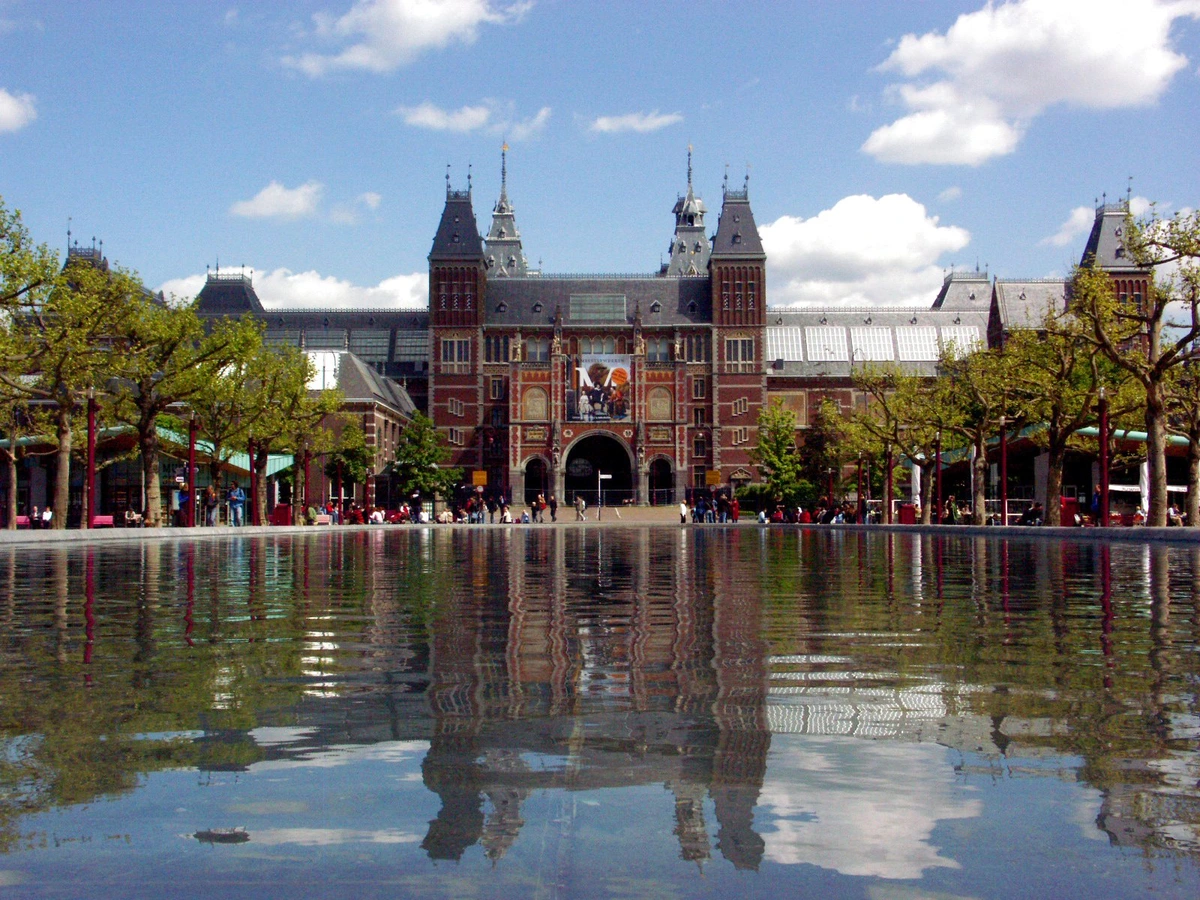
First Things First: Tickets, Timing, and Dodging the Crowds
Look, I'm all for spontaneous travel, but not when it comes to world-class attractions like the Rijksmuseum. Seriously, buy your tickets online in advance. There’s nothing worse than wasting precious Amsterdam exploration time standing in a seemingly endless queue, slowly turning into a statue while glorious art waits inside. I actually learned this the hard way once, stubbornly believing I could waltz in, only to spend an hour queuing – an hour I could have spent communing with a masterpiece! So, unless you enjoy the unique artistic challenge of people-watching in a slow-moving line, do yourself a favor and pre-book.
As for timing, my personal sweet spots are either right when they open their grand doors (9 AM sharp!) or in the late afternoon (say, after 3 PM). These times usually offer a slightly more serene experience. Mid-day is typically bustling, and while I appreciate the energy, sometimes you just want to commune with a masterpiece without someone's backpack accidentally using you as a speed bump.
The Rijksmuseum is enormous – a grand labyrinth of Dutch history and art. You could easily spend an entire day, or even two, attempting to absorb every single detail. My advice for a first-timer? Don't even try. Pick a few must-sees, savor them, and accept that you'll miss things. That's not a failure; it’s smart museum-going. I've been there, rushing through a gallery just to tick boxes, only to realize I hadn't seen anything. What a silly way to experience art! And frankly, my feet still haven't forgiven me for that particular marathon. It’s your journey, so make it a meaningful one, not a checklist. So, with logistics handled, let’s journey back in time to understand the very era that birthed so much of the brilliance you're about to witness: the Dutch Golden Age.
The Dutch Golden Age: A Foundation for Brilliance
The Cradle of Creativity: From Medieval Roots to Republican Zenith
Before we dive headfirst into the Golden Age, it's worth a quick nod to the rich artistic tapestry that preceded it. While the Rijksmuseum truly shines with its 17th-century collection, remember that Dutch art didn't just appear out of nowhere. On Level 1, you'll find fascinating medieval and early Renaissance works that lay the groundwork. These pieces often showcase profound religious devotion, appearing in forms like intricate altarpieces, devotional panels, and beautifully illuminated manuscripts, revealing the beginnings of a distinct Northern European style. But what was it about this specific period that ignited such an artistic explosion? To truly appreciate the Rijksmuseum's collection, especially the masterpieces of the 17th century, it really helps to wrap your head around a little something called the Dutch Golden Age. This wasn't just a sudden burst; it was a societal blossoming that built upon centuries of rich artistic and cultural heritage, truly reshaping the artistic landscape!
This period of intense growth and cultural expression bloomed following the arduous Eighty Years' War and the hard-won establishment of the Dutch Republic. This independence forged a fierce national identity, and newfound religious freedom (the rise of Protestantism) fueled an incredible drive for prosperity and cultural expression. Crucially, the Protestant Reformation significantly influenced artistic subject matter, nudging it away from solely religious iconography and grand church commissions. Instead, artists began exploring more secular narratives – everyday life, portraits, and landscapes – often infusing them with subtle moralizing themes or an emphasis on individual piety, a stark contrast to the dramatic altar pieces of Catholic Europe. It was a moment when everything clicked: economic growth, scientific discovery (think pioneering advancements in optics, cartography, and astronomy, with instruments like astrolabes, sextants, and early microscopes!). These scientific leaps weren't just theoretical; they directly influenced art, fostering a new era of realism. Advances in optics, for instance, are believed to have played a role in Vermeer’s almost photographic precision in capturing light and perspective, allowing artists to render scenes with astonishing accuracy. But it wasn't just Vermeer; the heightened observation fostered by optical tools also contributed to the meticulous detail seen in Dutch still lifes and portraits, enabling artists to capture textures and reflections with unprecedented realism. Similarly, improved cartography fueled a demand for detailed maps, which were often incorporated into or inspired grand landscape paintings and maritime scenes, reflecting the Dutch mastery of the seas and their expanding world view.
A Golden Tide: Trade, Wealth, and Shifting Patronage
This new era saw the Netherlands become a dominant European power, thanks in no small part to ambitious global trade ventures like the Dutch East India Company (VOC), which brought exotic goods and immense capital back to Amsterdam. This newfound wealth meant that art patronage shifted dramatically. Instead of primarily the Church or royalty, a burgeoning wealthy merchant class, influential civic guards (local militias who maintained public order and served as social clubs), and powerful regents (members of the ruling elite, often from wealthy merchant families) were commissioning art. These groups sought not just to display their newfound status, but also to solidify their civic identity, commemorate achievements, and foster unity within the burgeoning Republic through grand portraits, allegorical, and historical scenes. With the Protestant Reformation already nudging artistic patronage away from the church, focusing more on secular themes, artists like Rembrandt and Vermeer found incredibly fertile ground for their talents. You'll often see the exotic goods brought back by the VOC depicted in still lifes and genre scenes, hinting at global connections and prosperity, while the grand group portraits of the civic guards underscore a powerful sense of community and shared purpose.
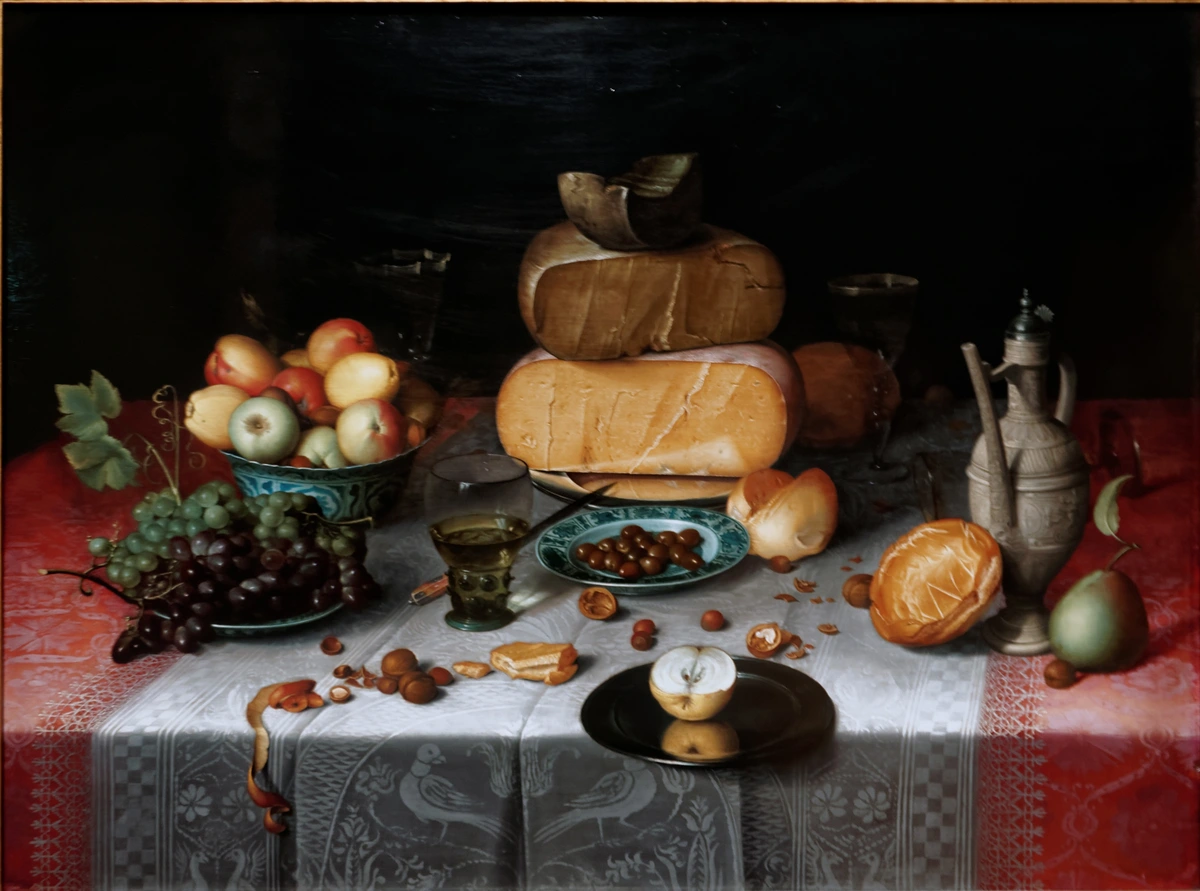
The Visual Language of a New Era: Art for All
This led to an explosion of portraiture (think those grand group portraits of civic guards), intimate genre scenes of daily life (Jan Steen, for instance, excelled at capturing lively, often chaotic domestic moments, and Pieter de Hooch masterfully depicted tranquil home interiors, reflecting the growing middle class's interest in their own everyday lives and morality), serene landscapes (like those by Jacob van Ruisdael or Jan van Goyen, depicting a newly confident nation's natural beauty and pride in its reclaimed land), and meticulously detailed still lifes – basically, everyday life elevated to high art, all of which you'll witness here in dazzling abundance. What's more, the advent of the printing press and the subsequent rise of printmaking during this period meant art became more accessible than ever, reaching a wider audience beyond just the elite. It’s like stepping into a vibrant, living snapshot of a nation at its peak. What strikes me most is how this era's prosperity and artistic output were so deeply intertwined, each feeding the other, creating a unique visual language of a flourishing republic. This vibrant era, brimming with innovation and prosperity, is nowhere more vividly captured than within the hallowed halls of the Rijksmuseum. So, with this rich foundation in mind, let's dive into the very heart of its collection...

The Rijksmuseum's Heartbeat: The Gallery of Honour and Its Stars
So, where do we find the true pulsating heart of the Rijksmuseum, the collection that defines its world-class status? Make a beeline for the Gallery of Honour (Eregalerij) on the second floor. This is where the absolute titans of Dutch Golden Age art reside. The sheer grandeur of the hall, with its soaring architecture, ornate details, and often a majestic organ, creates an almost sacred atmosphere for these works – it's a masterpiece in itself, designed by Pierre Cuypers to evoke awe.
Rembrandt's "The Night Watch": A Masterpiece Up Close
You simply cannot visit the Rijksmuseum and not stand before "The Night Watch." This isn't just a painting; it's a monumental civic guard portrait, commissioned for the Kloveniersdoelen (musketeers' meeting hall) in Amsterdam. Its original title was 'Militia Company of District II under the Command of Captain Frans Banninck Cocq,' but over time, its darkened varnish led to the popular, albeit inaccurate, 'Night Watch' moniker – a captivating misnomer that only adds to its mystique!
It’s immense, dramatic, and utterly captivating. I remember standing in front of it for what felt like an eternity, just trying to take in its sheer scale and intricate detail. What makes it so revolutionary, and something I constantly study as an artist, is how Rembrandt broke from the stiff, formal conventions of group portraiture. Instead of a static line-up, he created a dynamic, bustling scene, almost a snapshot of a moment. The way he manipulates light and shadow – his brilliant use of chiaroscuro to create such dramatic contrasts – and the dynamism of the figures bursting forth from the canvas, often with daring impasto (thick layers of paint) to give them palpable texture and presence, is nothing short of mind-blowing. As a painter, I constantly think about how he used texture to push and pull elements, making some figures recede while others leap forward with a vivid, almost tactile presence. It’s that raw, almost sculptural quality of the paint, especially in the ruffs and the glint off metal, that makes me want to immediately go back to my studio and experiment with texture. It's not just about what he painted, but how he painted it, inviting us into that fleeting moment, even if it’s technically daytime. And believe me, despite the crowds that often gather, finding that personal connection with such a colossal work is always worth a little shoulder-jostling.

Beyond the Night Watch: "The Jewish Bride" and Vermeer's Magic
While "The Night Watch" deservedly garners much of the spotlight – and boy, does it deserve it! – please don't rush past the other incredible works sharing the Gallery of Honour. This majestic space isn't just a showcase for individual genius; it's a testament to Dutch civic pride, where grand portraits of influential figures, like those by Frans Hals, powerfully communicate status and community spirit. Hals, by the way, with his famously loose, energetic brushwork, offers a lively contrast to Rembrandt's more dramatic, psychologically intense compositions, often capturing fleeting expressions and the immediate personality of his subjects, giving his sitters an almost palpable sense of spontaneity and life. As an artist, I find Hals's ability to imbue a portrait with such immediate vitality using seemingly effortless strokes incredibly inspiring. His bravura technique, almost anticipating impressionism, is a masterclass in controlled chaos that I often reflect upon in my own practice, trying to capture that same vibrant energy.
Rembrandt's "The Jewish Bride" (believed by some to depict Isaac and Rebekah from the Old Testament, though other scholarly interpretations exist, adding to its mysterious allure) is, for me, one of the most tender and emotionally resonant paintings I’ve ever encountered. The profound expressions, the gentle way their hands connect – it silently narrates an entire story of love and connection, making you keenly aware of the profound depth of human intimacy. It's a theme that deeply resonates with me, and I often explore similar emotional depths and profound intimacy in my own artistic practice, striving to capture those quiet, powerful human connections, as you can see in my art for sale. While these titans command much attention, the Golden Age was a rich tapestry woven by many brilliant hands, and you'll also discover exquisite paintings by Johannes Vermeer. Known for his luminous, almost ethereal light (notice how it falls so naturally on a simple pearl earring or a half-opened window), his meticulous technique, and quiet, intimate domestic scenes, Vermeer was a master of capturing everyday moments with a sense of serene contemplation. From a painter's perspective, his use of color to create form through subtle tonal shifts, and his meticulous layering of glazes, perhaps even employing a camera obscura to achieve such luminous precision, is masterful. It's like his canvases breathe light – a quality I constantly strive for in my own work, experimenting with translucent layers to achieve a similar luminosity. With roughly only 35 known paintings, each Vermeer is a precious and rare testament to his genius, making every viewing a true privilege.
Look out for stunning landscapes by artists like Jan van Goyen and Jacob van Ruisdael, and vivid genre scenes by Judith Leyster, showcasing the incredible breadth of artistic talent. Take your time with them; let their beauty wash over you. But the Rijksmuseum's treasures extend far beyond the canvas. Let’s explore what else this magnificent institution holds.
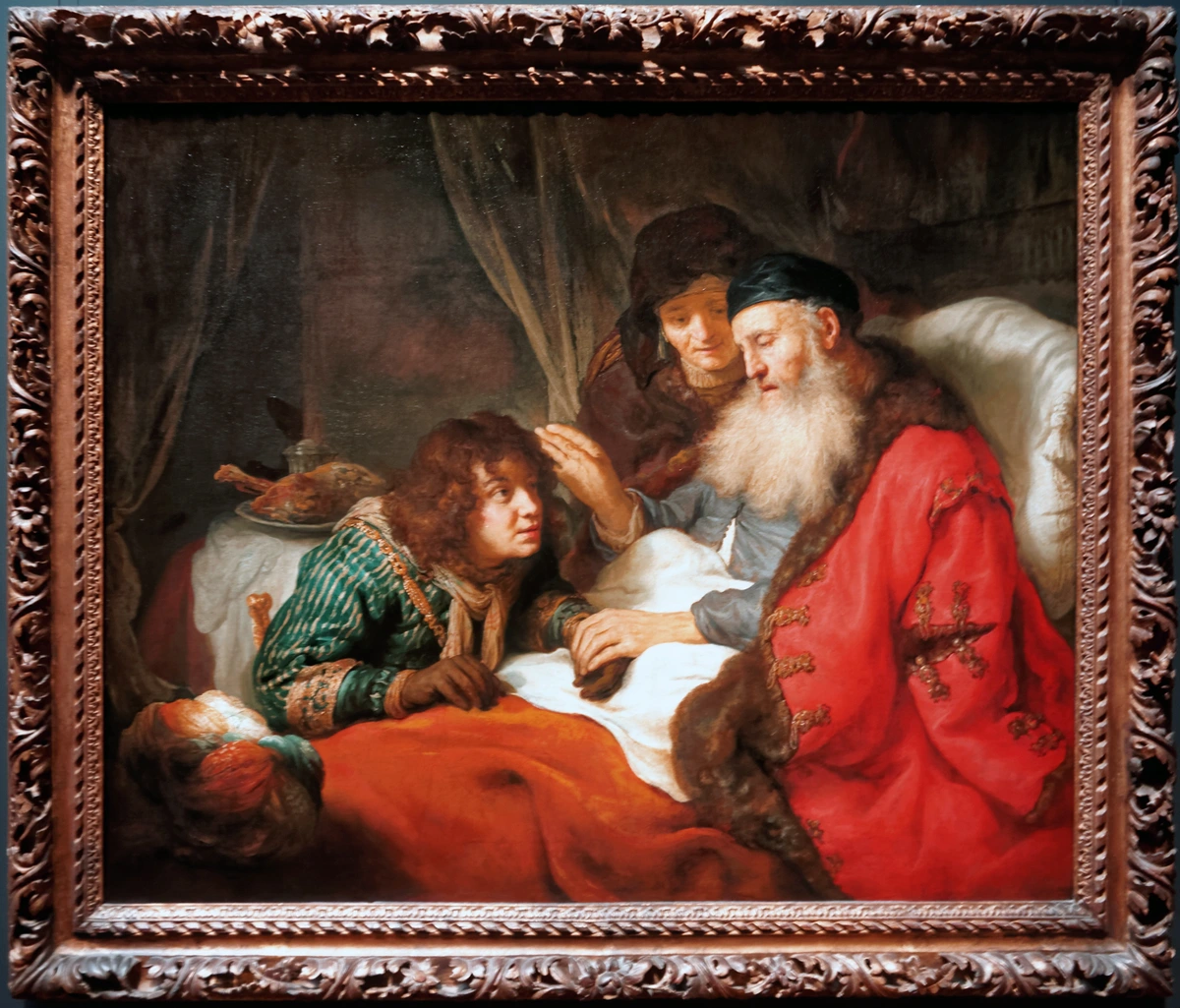
Beyond the Canvases: Delftware, Dollhouses, and Deeper Stories
While the canvases of the masters are undoubtedly the stars, the Rijksmuseum's narrative extends far beyond paint and pigment, offering a rich tapestry of Dutch artistry and culture across its many fascinating collections. It’s like stepping into a series of interconnected stories, each collection unveiling another layer of Dutch identity. Spread across its vast floors, you'll find remarkable collections like the iconic blue and white Delftware. These ceramics, initially inspired by expensive Chinese porcelain, were ingeniously adapted by Dutch artisans using a distinctive tin-glaze technique. This technique provided an opaque white background, allowing for vibrant blue hand-painted motifs often depicting Chinese-inspired chinoiserie, traditional Dutch landscapes, seascapes, and intricate floral patterns. They quickly became a symbol of Dutch prosperity, craftsmanship, and national identity, not only for the wealthy but also as aspirational items for the burgeoning middle class. For me, these beautiful, intricate pieces feel like miniature canvases themselves, each brushstroke a testament to human ingenuity and the desire to bring beauty into everyday life – a sentiment I deeply share as an artist. These weren't just decorative; they were a significant export commodity that influenced ceramic production across Europe, democratizing art and design and allowing a growing middle class to display elegance and national pride in their homes.
You’ll also discover sculptures and intricate dollhouses (seriously, these are amazing miniature worlds, some complete with tiny silverwork and furniture, like the famed Petronella Oortman Dollhouse!). As an artist, I'm utterly captivated by the meticulous attention to detail in these dollhouses; they're like tiny, perfect abstract compositions, each element carefully placed to create a harmonious whole. These aren’t just toys; they’re miniature reflections of wealthy 17th-century households, offering an unparalleled glimpse into domestic life, revealing intricate details about interior design, material culture, and the social hierarchy within the home.
Beyond purely visual art, the Rijksmuseum acts as a vital guardian of broader Dutch cultural heritage. Its extensive collections include priceless historical documents, exquisite crafts, and pioneering scientific instruments – like exquisite globes, astrolabes, sextants, and even early microscopes – that mapped the stars and advanced navigational science. These aren't just curiosities; they are a living archive, charting the nation's journey from medieval times through the early 20th century. You'll see meticulously rendered historical maps, intricate textiles, exquisite weaponry, elegant clothing, humble household items, and fascinating ship models from the nation's maritime past, vividly illustrating the naval power and global reach of the Dutch Republic. And speaking of global connections, Level 0 also houses a remarkable collection of Asian art, reflecting centuries of trade and cultural exchange, particularly with countries like Indonesia, Japan, and China, often showcasing exquisite porcelain patterns, intricate textiles like batiks, and ceremonial weaponry. These pieces truly broaden your understanding of this nation's rich past and its incredible craftsmanship, spanning from medieval times through the early 20th century.
It’s also important to acknowledge that the immense prosperity of the Golden Age, which directly fueled the flourishing art market and the acquisition of many artifacts now in the museum, was tragically intertwined with Dutch colonial history. The wealth generated from often-brutal global trade and colonial ventures significantly contributed to the nation’s artistic output. The museum, to its credit, is increasingly addressing this complex legacy. Through dedicated research, careful re-labeling of objects like Indonesian textiles and Chinese porcelain (many acquired via the Dutch East India Company's problematic trade routes), and specific exhibitions such as 'Slavery' (2021) or 'Revolusi! Indonesia Independent' (2022), they actively encourage visitors to engage with these deeper, sometimes uncomfortable, stories. For example, they also re-contextualize historical maps and maritime artifacts to highlight their connection to global trade and exploitation, inviting a critical reflection on the origins of Dutch prosperity. It’s a vital part of understanding the full picture.
Preserving the Past, Inspiring the Future: Restoration and Education
One aspect I always find fascinating, but often overlooked, is the Rijksmuseum's profound commitment to art restoration and conservation. Beyond merely displaying art, the museum is actively safeguarding these priceless pieces for future generations. You can often peer into visible workshops where dedicated conservators are meticulously working – carefully cleaning centuries of varnish, repairing delicate tears, or analyzing pigments – revealing original colors and details long hidden by time. It’s a captivating, behind-the-scenes look at the science and artistry of preservation. This commitment extends to art education and outreach, with the museum developing programs that inspire new generations. They offer fantastic initiatives for children and families, such as interactive workshops, digital learning platforms, and specially designed tours, proving that art is for everyone and that history is a living, breathing subject.
Navigating the Grand Labyrinth: My Personal Strategy
So, you’ve gotten your tickets, dodged the queues, and soaked in the glory of the Gallery of Honour. Now, how do you conquer the rest of this magnificent beast without feeling lost at sea? My personal strategy is delightfully simple: don't feel obligated to follow a strict, prescribed path. The Rijksmuseum itself, designed by Pierre Cuypers, is a monumental work of Neo-Renaissance and Neo-Gothic architecture – a truly grand cathedral of art, purposefully built to house and proudly display the nation's artistic and historical treasures. Its soaring arches, intricate details, and majestic central hall aren’t just decorative; they actively guide your eye and evoke a sense of awe. This design draws heavily from the principles of Dutch Baroque architecture, evident in its classical symmetry, grand scale, and rich ornamentation. The building itself is a powerful, artistic statement of national pride carved in stone, a deliberate fusion of art and architecture designed to elevate the experience of Dutch heritage, making the very building an experience in itself.
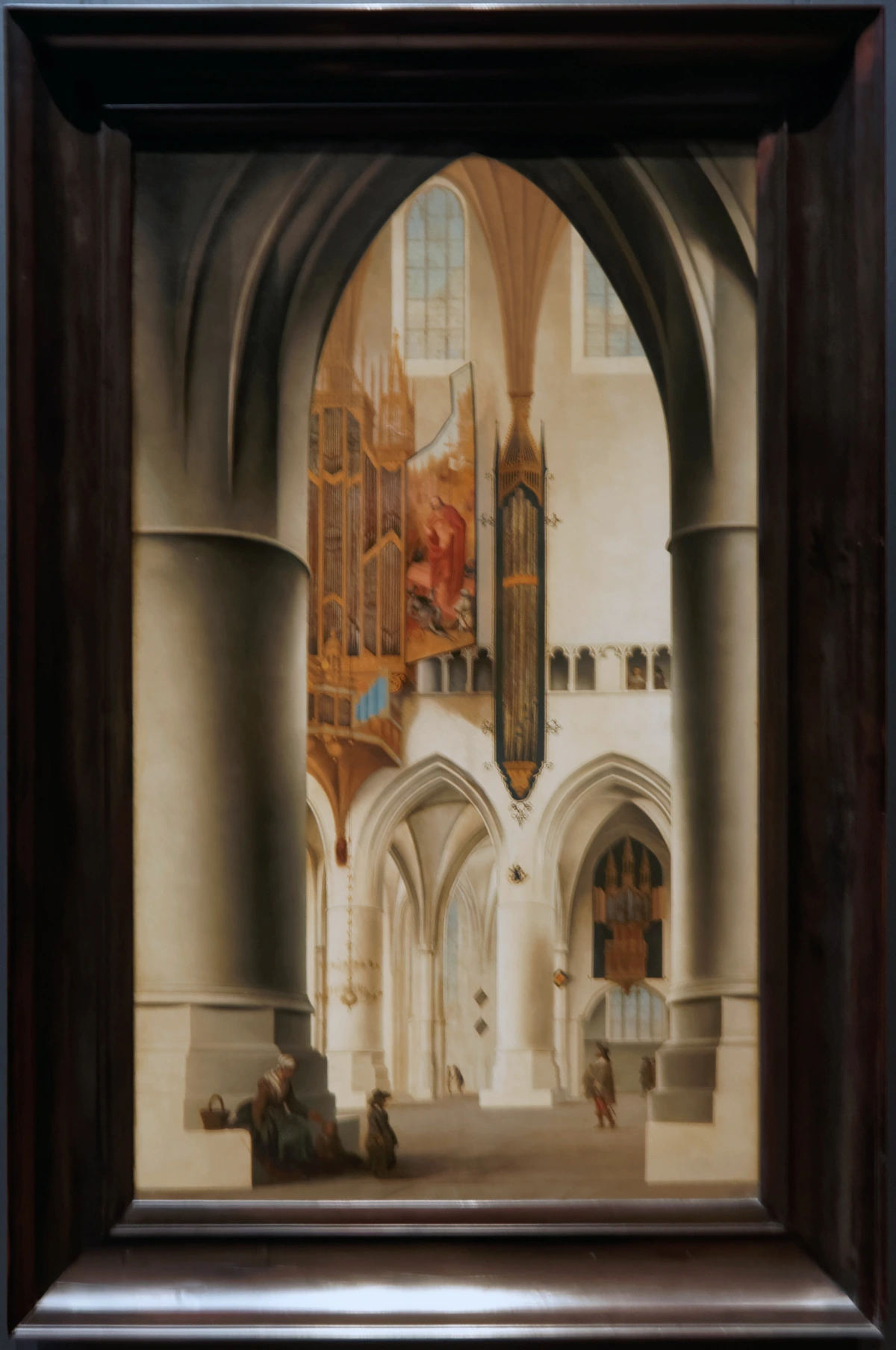
To help you conquer this magnificent labyrinth and make the most of your visit, here's a breakdown of what awaits you on each floor, a little taste of the journey:
- Level 2: This is where the magic truly happens, a glorious immersion into the 17th-century Dutch Golden Age masterpieces. Here, you'll stand in the presence of giants like Rembrandt, Vermeer, and Hals, feeling the vibrant energy of their era come alive.
- Level 1: Delve into the rich tapestry of Medieval and Renaissance art, discovering early Dutch masters and profound religious works. It's also home to the magnificent Cuypers Library, a breathtaking, serene temple of knowledge that feels like stepping into another era – a must-see for any book lover, and often hosts captivating special exhibitions. Remember these are temporary, so check the museum's website for current offerings!
- Level 3: Ascend into the 18th and 19th centuries, offering fascinating insights into more modern Dutch narratives and the artistic evolution that followed the Golden Age.
- Level 0: This ground floor is a treasure trove of broad Dutch history and cultural artifacts, from the nation's maritime power to intimate glimpses into everyday life. You'll find fascinating ship models, sculptures, stunning Asian art collections (like exquisite Chinese porcelain or Japanese lacquerware), and a vast array of historical objects that tell tales of global connections.
Or, forget the strict timeline and try a thematic trail! Imagine following "A Day in the Life of a Dutch Citizen" trail, focusing on intimate genre paintings by artists like Jan Steen or Pieter de Hooch and domestic artifacts, or tracing "The Evolution of Dutch Landscapes," from the serene Golden Age vistas of Ruisdael to the more dramatic Romantic works of later centuries. You could even embark on a "Science and Art" trail, connecting the scientific instruments on Level 0 (like astrolabes and microscopes) with the precise realism of Golden Age paintings, or a "Global Connections" trail, exploring the Asian art collections and the exotic goods depicted in Dutch still lifes, revealing the reach of Dutch trade. I’ve often found that some of the most memorable moments come not from grand, famous works, but from unexpectedly stumbling upon a lesser-known piece that profoundly resonates with you. For instance, I once saw a child completely mesmerized by a miniature dollhouse, completely ignoring the grand portraits nearby. It just goes to show, art speaks to everyone differently. Like this serene moment of an old woman saying grace – it’s a quiet, introspective piece that offers a beautiful pause from the grander narratives, reminding you of the beauty in everyday life. Remember, it is absolutely okay to skip rooms, floors, or even entire sections if they don't call to you. This is your visit, a personal journey, not an academic exam. It's much like navigating my own Den Bosch museum, which, while smaller, still encourages you to find your own path and discover what speaks to you.
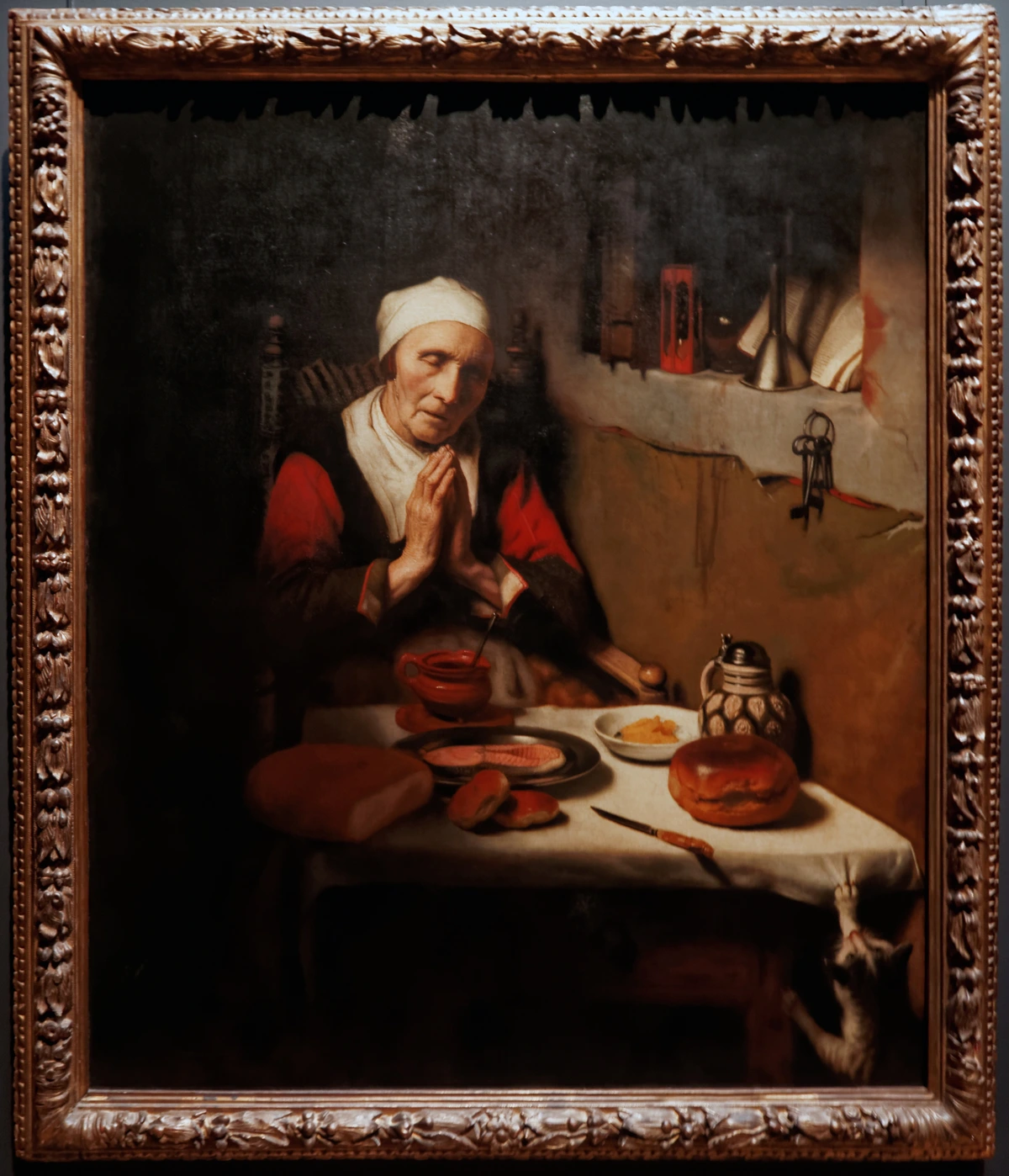
Embracing the Experience: Art, Inspiration, and Reflection
Beyond the specific collections and navigation strategies, the Rijksmuseum offers a richer, more immersive experience that engages all your senses and intellect. It's not just art on display; it's a living archive of Dutch cultural heritage. For me, visiting institutions like the Rijksmuseum isn't merely about admiring old paintings; it’s a profound opportunity to connect with history and the incredible ingenuity of the human spirit. It’s quite fascinating, actually, looking at these masterpieces of Dutch Golden Age art and realizing the incredible journey art has taken through the centuries. It makes me reflect on how even contemporary abstract art still builds, often subtly, on these foundational principles, exploring similar themes of light, form, and emotion in completely new ways. For instance, the dramatic chiaroscuro and intentional negative space in a Rembrandt portrait find a direct lineage in the compositions of modern abstract works, like those by Wassily Kandinsky, who explored spiritual and emotional resonances through pure color and form. Or consider how the meticulous balance of color and shape in a Vermeer interior echoes the intentionality in a Henri Matisse composition, even though their styles are worlds apart. Even a contemporary artist like Mark Rothko, with his large fields of color, could be seen as exploring a descendant of Vermeer’s mastery of light and atmosphere, using color to evoke deep emotional and spiritual states, albeit in a radically different form. These masters teach us about visual problem-solving, regardless of era or style. It's a different world entirely, but the underlying, primal drive to create remains beautifully the same.
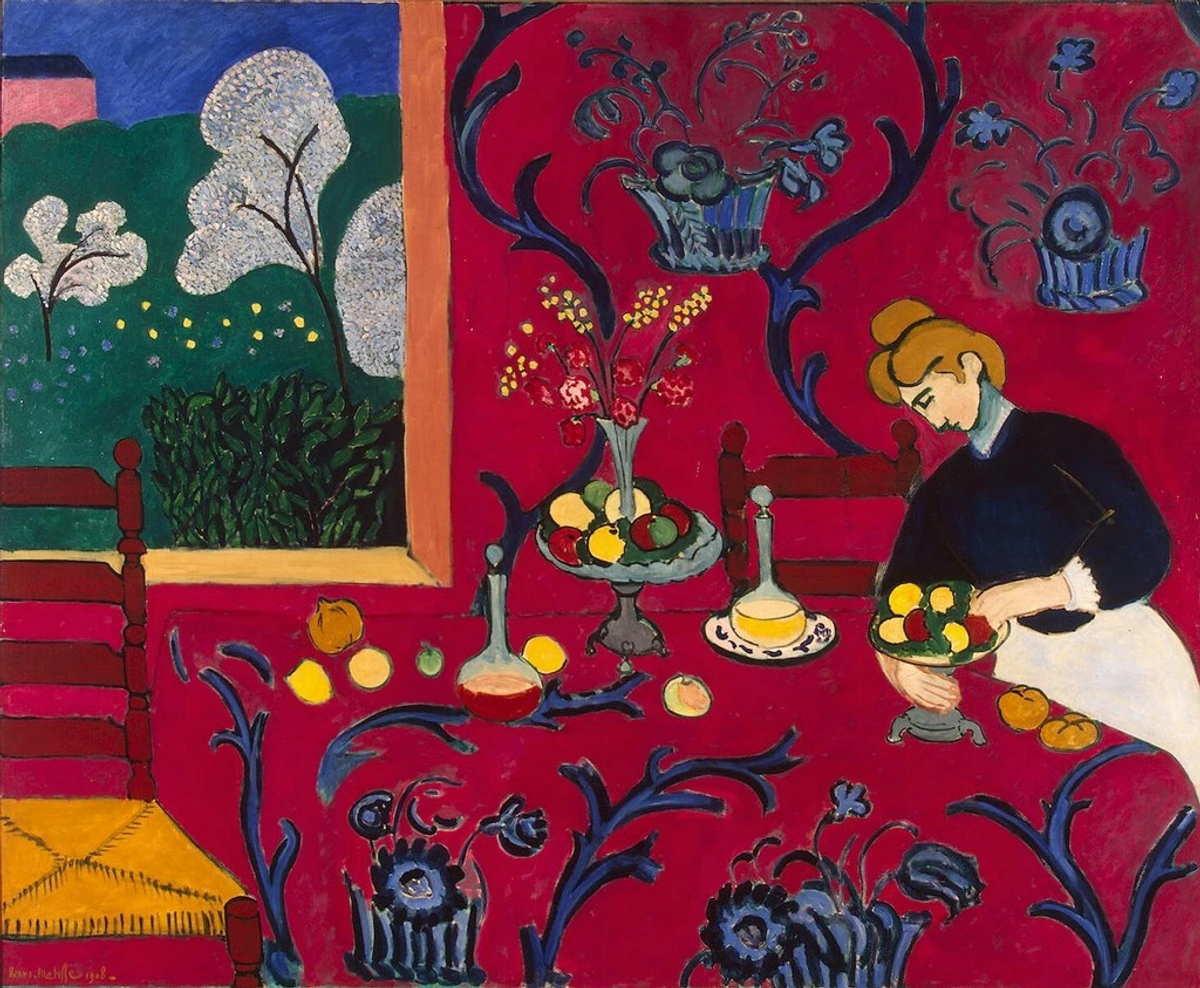
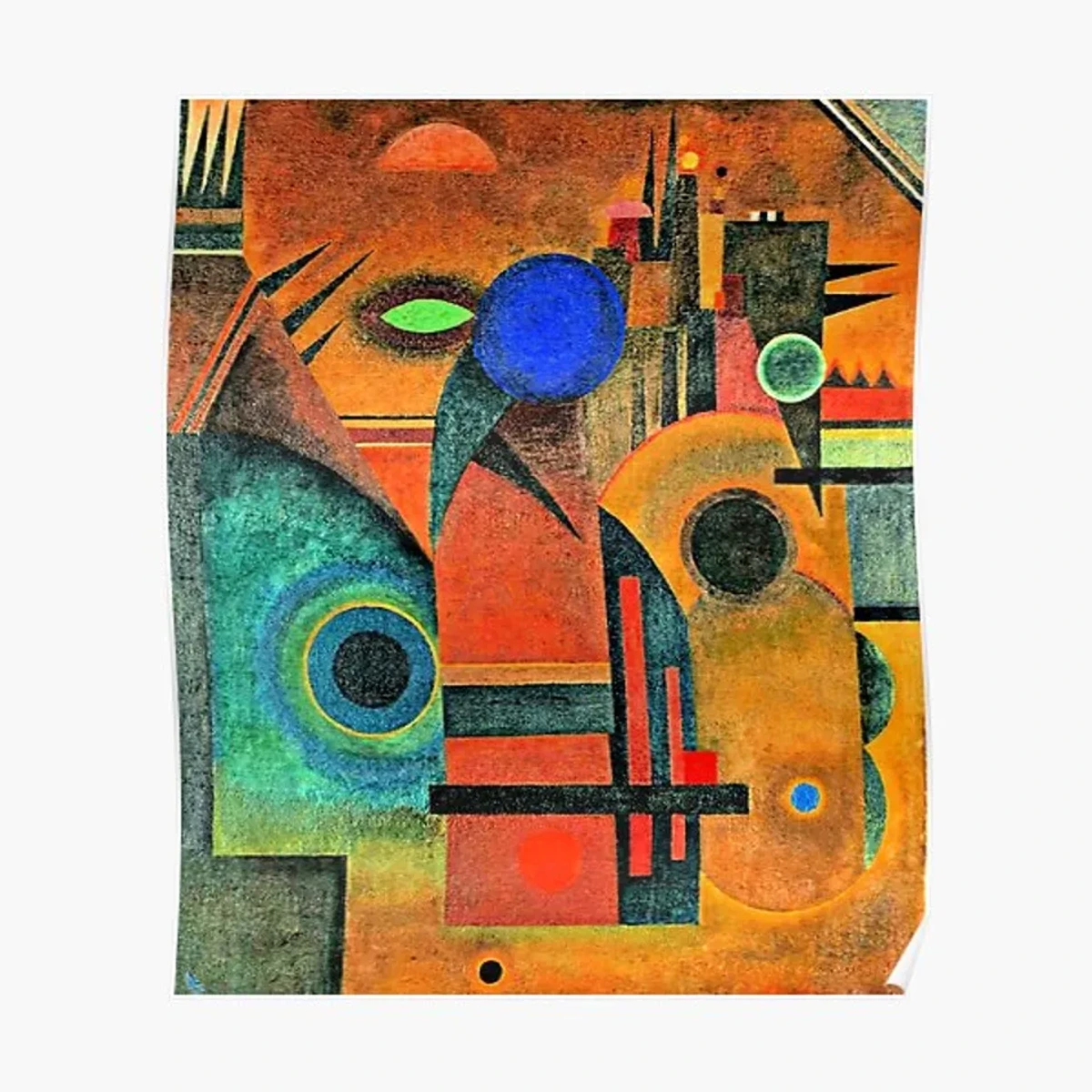
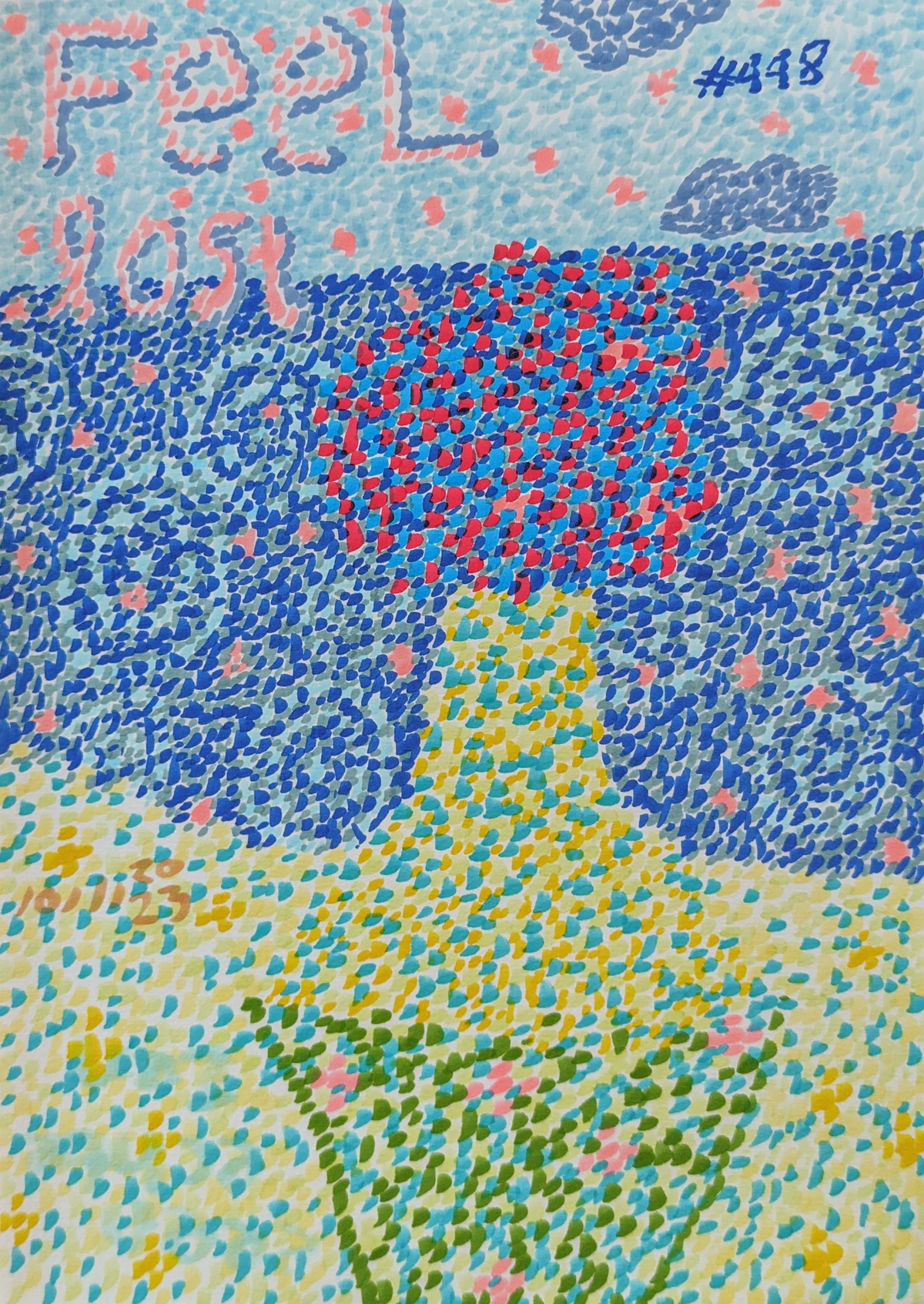
[credit](Zen Dageraad), licence
FAQs for the First-Timer: Practical Tips for Your Visit
Alright, so those are my musings on the Rijksmuseum. But I know what you’re probably thinking: "What about the practical stuff?" To help you plan your visit with confidence, here are some of the most common questions I get asked, or that I wish I'd known before my first trip.
- How long should I plan for my visit? I’d say a solid 2.5 to 4 hours is ideal for a first-timer who wants to see the highlights without feeling rushed or utterly exhausted. If you want to dive deeper, budget more time.
- What’s the best time to visit? As I mentioned, early morning (right at opening at 9 AM) or late afternoon (after 3 PM) are usually the least crowded. Try to avoid weekends if possible! Always check the Rijksmuseum's official website for special events or temporary exhibitions that might affect crowd levels or opening hours.
- How do I get to the Rijksmuseum? The Rijksmuseum is conveniently located at Museumplein. From Amsterdam Centraal Station, you can easily reach it by tram (lines 2 or 12 to the 'Rijksmuseum' stop). It's also a pleasant walk from many central hotels and canals.
- Are there specific holiday opening hours? It is essential to check the Rijksmuseum's official website for the most accurate and up-to-date information on holiday opening hours, as these can vary.
- Is the museum accessible for visitors with reduced mobility or sensory sensitivities? Absolutely! The Rijksmuseum is very accessible, with lifts to all floors, ramps, and accessible restrooms ensuring a comfortable visit for everyone. While the museum is enormous, its design with lifts to all floors ensures physical accessibility. For those who need to conserve energy or prefer a calmer experience, I highly recommend leveraging the suggested visiting times (early morning or late afternoon) to avoid peak crowds. Additionally, planning your route to focus on specific floors or wings rather than trying to see everything can be very helpful. If you have sensory sensitivities, consider bringing noise-canceling headphones, and inquire about any quiet rooms, sensory kits, or specially designed guided tours the museum might offer. Don't hesitate to take breaks at the cafes or benches throughout.
- Are photos allowed? Photos are generally allowed for personal, non-commercial use without flash. Flash is strictly prohibited due to potential artwork damage. Always check signage for specific exhibit restrictions.
- Is there an audio guide? Yes, and I highly recommend it! It offers fantastic, insightful commentary into the key artworks and helps contextualize what you're seeing, bringing the pieces to life.
- Are there lockers for bags? Yes, there are free lockers available for coats and small bags. Larger luggage is usually not permitted, so plan accordingly.
- Can I eat or drink inside the museum? Small water bottles are generally permitted, but confirm upon entry. Food and drinks are restricted to designated cafe areas.
- What about food and souvenirs? Don't forget to factor in some time for a coffee break or lunch at one of their charming cafes. It’s an ideal way to rest your feet, process the visual feast you’ve just enjoyed, and recharge before diving back in. Their main restaurant, RIJKS®, is actually Michelin-starred and focuses on Dutch produce, offering a unique fine dining experience, but there are also charming, more casual cafes perfect for a quick coffee and pastry. There’s also a fantastic museum shop if you’re looking for a beautiful memento, or perhaps seeking inspiration for your own artistic endeavors.
- What's the best way to use the museum map or app? Download the official Rijksmuseum app or grab a physical map upon arrival. Use them to pre-plan your route to your must-see highlights, saving time and enhancing your navigation.
My Final Two Cents: Just Go, and Let It Happen!
Ultimately, my biggest piece of advice is just to go. Don't overthink it, don't feel pressured to see absolutely everything, and allow yourself to simply experience it. Whether it's the awe-inspiring grandeur of "The Night Watch," the quiet intimacy of a Vermeer, the surprising detail of a Delftware piece, or just the sheer, stunning architecture of the building itself, the Rijksmuseum is a truly special place.
It’s more than just a museum; it’s an institution that holds so much history, beauty, and human endeavor, and I genuinely believe everyone should experience it at least once. For me, it’s a constant reminder of humanity’s boundless creativity and its enduring quest to capture life’s essence. Visiting places like this always sparks a new idea, a different way of seeing color or light that I can bring back to my canvas, ensuring that initial overwhelm is replaced by profound inspiration. What piece of Dutch heritage will you connect with most deeply? Who knows, you might even find yourself inspired to create something of your own, to contribute your own unique voice to the ongoing narrative of art and expression. Perhaps it will inspire your next great adventure, artistic or otherwise, and if it sparks an urge to bring more color and thought into your own space, feel free to explore my art for sale.




